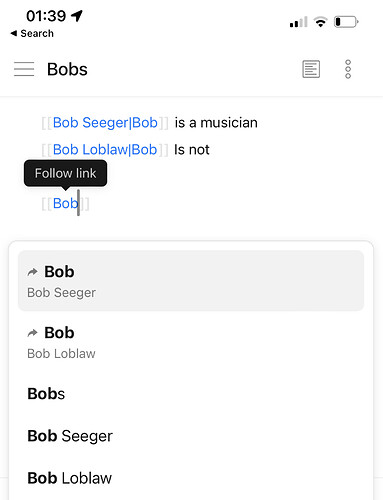You could always use aliases. I have created two notes about Bobs. Bob Loblaw and Bob Seeger and given them both aliases of Bob. Then you can see in the “Bobs” note I have both of them linked already, and what it looks like when searching for them to link.
3 Likes


